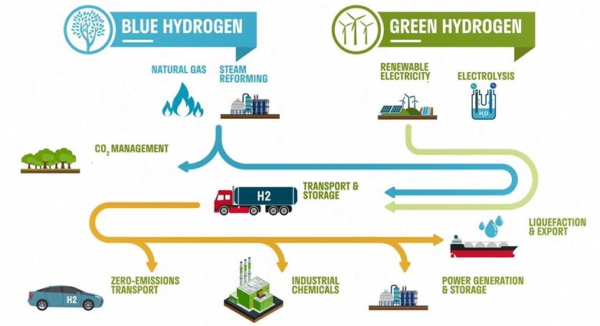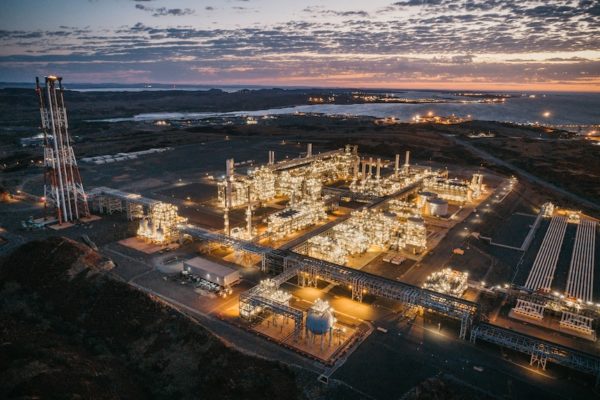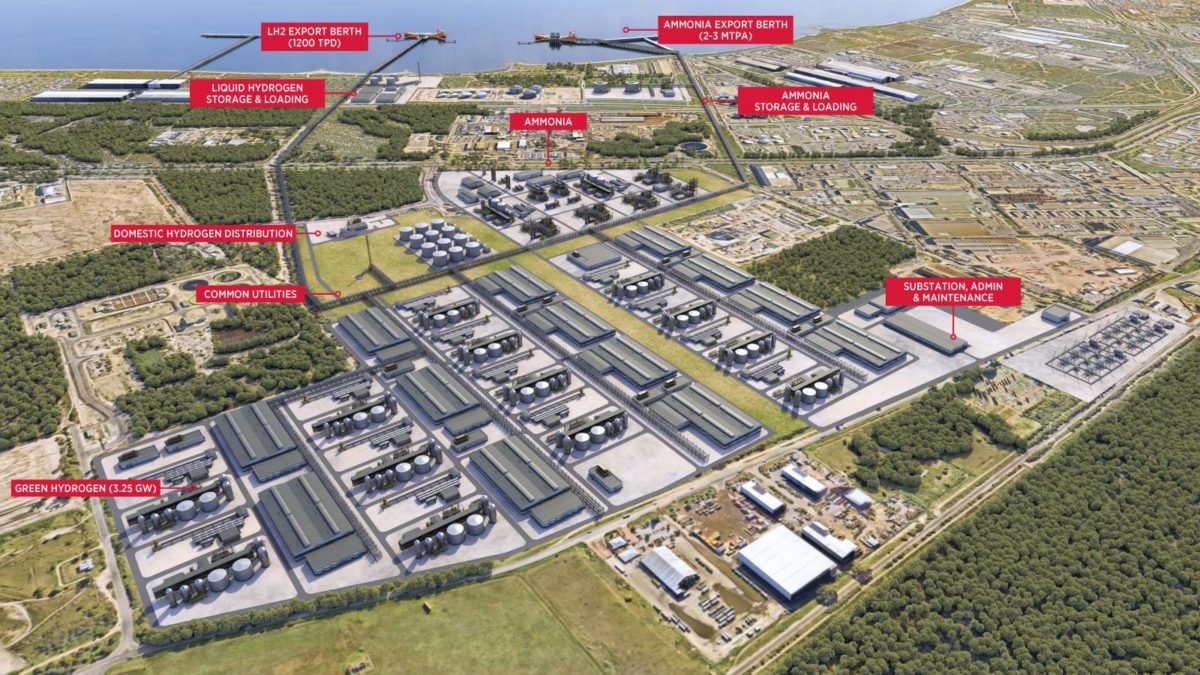Oil and gas company Woodside Petroleum Limited yesterday surprised the market with its ‘H2Perth’ announcement which will see the company construct a $1 billion hydrogen and ammonia plant in Kwinana on Western Australia’s south coast. Woodside claims the facility will produce both green and blue hydrogen – though specifics around how the hydrogen could be classed as such remains murky.
The news, which is yet to be announced on the company’s ASX, comes not long after Woodside gained a crucial approval from the Western Australia government for its proposed Scarborough liquified natural gas (LNG) project, a $16 billion deep sea gas drilling project off the state’s coast.
Green-ish, blue-ish
A spokesperson from the Western Australian government, which has supported the plan, told pv magazine Australia one third of the Kwinana project’s hydrogen would initially be produced through electrolysis, while two thirds would be produced using gas. The electrolysers used in the project, however, are to be powered from the Western Australian grid – which in the last year sourced under a third of its electricity from renewable sources, with the vast majority coming from fossil fuels. Woodside’s announcement did not include plans for additional solar or wind installations, making it somewhat difficult to claim the hydrogen produced via electrolysis is indeed renewable.
The majority of the hydrogen produced in the project’s first phase will come from gas via steam methane reforming, with the company expecting to use 40 terajoules — equivalent to 1 trillion joules or 0.278 GWh — of gas per day. Woodside says the H2Perth project will be net zero, which it plans to achieve using a combination of abatements, offsets and renewable energy certificates.
Maggie Wood, director at Conservation Council of WA, told pv magazine Australia it had examined Woodside’s H2Perth plan and found the details “very vague,” noting exactly how the facility plans to achieve carbon neutrality is “really unclear”.
“This is a big announcement for Woodside. When a company doesn’t provide a lot of info to the market, there’s normally a reason,” Wood said.

This lack of clarity led Wood to question whether the project’s blue hydrogen claims are even verifiable, saying the output might be better classed as grey hydrogen.
Scarborough gas project
In August, WA’s environment minister granted approval for a key component of Woodside’s proposed Scarborough gas field project, in which the company plans to construct a gas field approximately 375km north-west of the Burrup Peninsula with production start between 2023 and 2025.
The company is expected to reach its final investment decision on the project by the end of the year – which has unsurprisingly drawn widespread criticism. “If Woodside is serious about reducing emissions, then the best way to do that would be to stop the planned development of the Scarborough gas project,” Fiona Ivits, acting head of communications at Greenpeace Australia Pacific told pv magazine Australia.

Woodside
Conservation Council of WA have also been highly critical of the plan, which it noted would be a major ($16 billion) draw on Woodside’s budget – making yesterdays news of a $1 billion hydrogen facility all the more surprising.
A spokesperson for Woodside told pv magazine Australia the gas from the Scarborough project would not be used at the H2Perth facility because the company has an offtake agreement in place with Perdaman Chemicals and Fertilisers, and plans to export the remainder.
This content is protected by copyright and may not be reused. If you want to cooperate with us and would like to reuse some of our content, please contact: editors@pv-magazine.com.









By submitting this form you agree to pv magazine using your data for the purposes of publishing your comment.
Your personal data will only be disclosed or otherwise transmitted to third parties for the purposes of spam filtering or if this is necessary for technical maintenance of the website. Any other transfer to third parties will not take place unless this is justified on the basis of applicable data protection regulations or if pv magazine is legally obliged to do so.
You may revoke this consent at any time with effect for the future, in which case your personal data will be deleted immediately. Otherwise, your data will be deleted if pv magazine has processed your request or the purpose of data storage is fulfilled.
Further information on data privacy can be found in our Data Protection Policy.